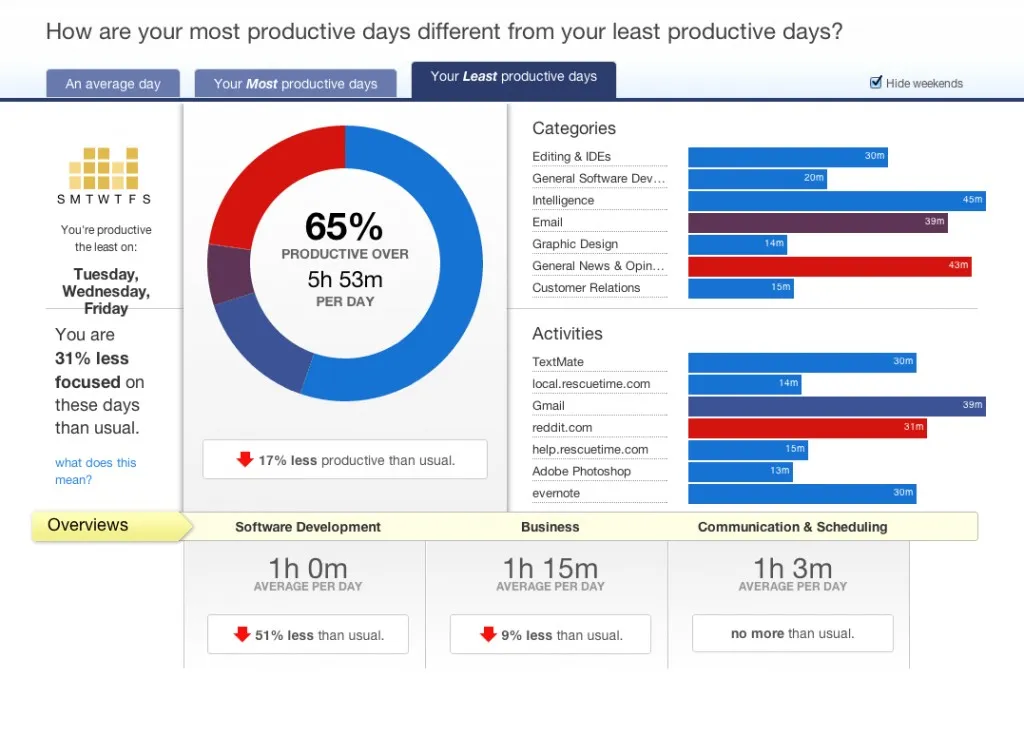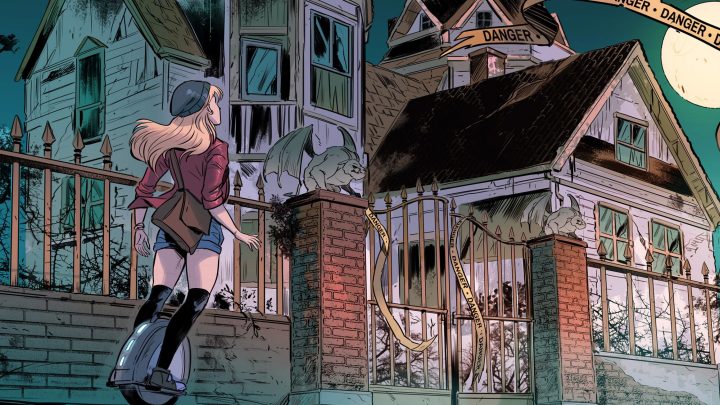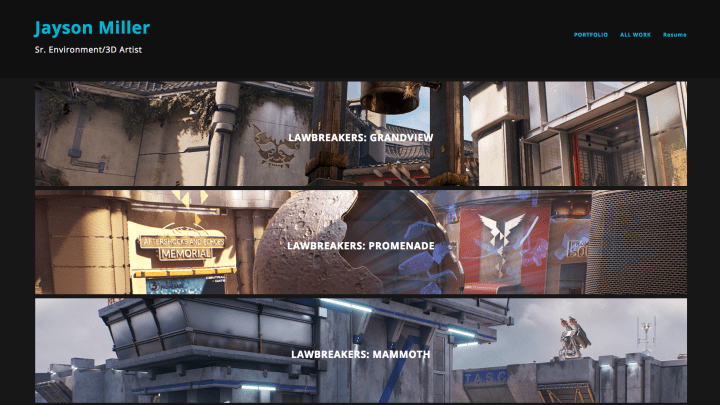10 killer time-management tips for artists

 Working long hours is an occupational hazard of the CG industry. Sometimes, that’s because employers place impossible workloads on their staff. But artists often don’t help themselves by the way they work. One person who has seen both sides of the problem is Allan McKay. As well as being an award-winning VFX supervisor for the likes of Industrial Light & Magic, Ubisoft and Blur Studio, Allan runs his own company, Catastrophic FX.
Working long hours is an occupational hazard of the CG industry. Sometimes, that’s because employers place impossible workloads on their staff. But artists often don’t help themselves by the way they work. One person who has seen both sides of the problem is Allan McKay. As well as being an award-winning VFX supervisor for the likes of Industrial Light & Magic, Ubisoft and Blur Studio, Allan runs his own company, Catastrophic FX.
“You can bitch and moan about studios, but as an individual you need to take responsibility for how you work,” he says. “At high school, I dicked around and didn’t mesh with the teachers. But the few times I decided to pay attention in class, everything worked. I wouldn’t get in trouble; I wouldn’t get held back. I thought: ‘Wow, if you do things the right way, life’s much easier.'”
To help you take control of your working hours, we asked Allan to provide his 10 killer time-management tips for artists. Covering everything from identifying your personal time-wasters to structuring your day to create periods of flow, they should help you to accomplish in eight hours what might previously have taken ten or twelve – and get you home on time, every time.
Main image: Must Be Bunnies by Simon Eckert
1. Try to negotiate staggered hours
Notice how when you come into work on a weekend, or stay back at night, you get more done? Because work is less busy, there are fewer distractions. No one is buzzing around or stressing you out, so you have time to focus.
So see whether it’s possible to come in two hours earlier than everyone else each day, and then leave two hours early, provided all of your work is done. Most meetings and reviews are done by 4pm, and at that time of day, most people’s energy and productivity begin to sink anyway.
You will get mixed responses from management, so sell it to them as something to trial for two weeks: if you are in fact more productive in that time, push for a permanent change.
2. Draw up a daily schedule
Plan your day before you begin work. Write down everything you need to do on a piece of paper. This means you can’t forget anything, and having a physical list is a constant reminder. The next step is to prioritise those tasks. You want no more than two primary goals for the day.
But the hardest part of having a ‘to do’ list is actually marking things off. Don’t just push tasks forward a few days if you don’t get to them: it’s much better to schedule tasks realistically.
So how can you tell if you have too many items on your list? Try writing down a realistic – or slightly generous – amount of time next to each one. Writing an email is usually a 10-minute task, but phone calls sometimes go on for 30 minutes, and creating a specific image might take five or six hours.
If you realise you have two or three days’ worth of work written down, remove less important tasks from the list – or even notify your supervisor to ask for work to be taken off your plate.
A brilliant friend keeps a productivity chart which shows how successful he was at getting things done day to day. His goal was to keep it at 100% consistently – in other words, never to burden his day with day with unrealistic expectations and harm his productivity.

Available for Windows, Mac, iOS and Android, RescueTime tracks how much time you spend in different apps to identify time-wasters. The Lite version is free; a Premium account is $9/month.
3. Identify your personal time-wasters
There’s a cool little app called RescueTime that monitors what you’re doing on your computer. At the end of the day, it tells you how much time you spent in each application. Look at a typical working day, and identify where you’re wasting time. Common time-wasters include social media and email.
When you need to focus, you can tell RescueTime to block distractions (you can specify what counts as a distraction) for the next two hours, or prevent you from browsing non-work-related websites.
4. Don’t try to multitask
I constantly hear busy people tell me they’re doing 50 things at once. This isn’t necessarily being productive: instead, you may actually be distracting yourself from ever getting anything done.
Rather than always having several web browser windows, email and databases open alongside your art software, focus on one thing at a time. Get one job further on, then, while you’re waiting for feedback, jump onto the next job. Working in this way, your brain is able to focus on a task, rather than struggling to vaguely keep up with all the different things going on.
5. Batch up non-art tasks
Making time to focus on a job is all about batching up other tasks. Batch emails into one hour, once or twice a day. Same with Facebook: make it a recreational thing at 4pm where you can spend 30 minutes on it and enjoy it, rather than sneaking it in every time the boss isn’t looking.
Meetings can be another huge time sink, so see if there are ones you can skip without drastically affecting your day. This can be a sensitive subject, so try presenting it as being able to get more done if you can group all of the meetings together, or only attend the specific parts of a meeting relevant to you. If a production co-ordinator is taking notes, suggest you just get those notes.
6. Structure your day to create periods of flow
As artists, we love to get into flow, to get into the zone. When you do, it’s magic, but you only get there a couple of times a day, and it’s difficult not to be interrupted during those periods.
Try assigning two two-hour blocks each day where you only focus on work. This has been tested a lot: by putting the phone on silent and not allowing distractions, most people get more done in those four hours than they normally would in ten hours.
Another way this works is to do 60 minutes of work, then take a 15-minute break, then do another 60 minutes of work, then a 30-minute break, and keep repeating that pattern throughout the day.
7. Have all your reference material to hand
Having to hunt for reference material can waste precious time at the start of a work session. I’ve got into the habit of continually dumping stuff into a Dropbox folder so that it’s always to hand.
Save your work there, too: if you need to present to a client, you can waste a day trying to dearchive material. And save WIPs: being able to show your supervisor how work is progressing can take the pressure off you. Some people genuinely don’t realise all of the steps a job has to go through.
I’m one of those people who throws a lot of ideas down and needs something to autosave them, so for written material, I use OneNote [now a free app for Windows, Mac OS X, iOS and Android]. It’s a place to store all of the information I need – even links to sites I frequently access.

Online music service focus@will plays you repetitive, vocal-free tracks to help you get into flow and stay there. It has a free 30-day trial, so you can see if it works for you before you subscribe.
8. Block out the world
Once you begin work, block out all possible distractions. Turn off your phone, and consider investing in a pair of noise-cancelling headphones.
You could also try focus@will, a new website that plays repetitive music to you. It isn’t meant to be stuff you enjoy listening to; it’s meant to be stuff that puts you in the mood to work.
It sounds stupid, but the idea is that you can improve productivity by working to music of an appropriate tempo, depending on whether you resonate to classical or to house. There are no vocals, just repetitive beats, to lock you into what you’re supposed to be focusing on.
9. Set reminders and countdowns
One of the weirdest, yet most important, bits of advice I can give to anyone who really wants to start working productively is to get a stop watch. I own several, and have one at my desk at most times.
Whenever I start a task, I give myself a time to completion, set a stop watch, and put it in front of me. Time seems to move a lot slower when I’m conscious that it’s ticking down, so I tend to get a lot more done. It works far better than looking at the clock every five minutes.
Also try setting reminders on your phone or online calendar for times of day when you tend to get distracted. These can be anything you want. ‘Get back to work’ might stop you answering emails; ‘Is this necessary?’ questions whether 20 minutes spent colour-correcting an image is being productive.
Lastly, I have the home page on my laptop set up with a widget counting down to 6pm. It’s a constant reminder that I only have X hours left to complete all of the tasks I have been assigned. Each time I see it, I stop messing around and focus on the quickest solution to a problem, rather than trying to find the fanciest.
10. Spend the last 15 minutes of the day wrapping up
At the end of the day, spend 15 minutes wrapping up. Part of this should involve telling people what you’ve done that day. Send out an email saying, “This is what I’ve worked on, this is the location of the files, and these are the people I’ve contacted.”
Lots of artists find this odd. Either they don’t want to bother their supervisors, or they want to hide from them until everything is done. But your supervisor doesn’t want the email, they can just delete it. And producers love this kind of information. They have the hardest job in the world: they’re in charge of a production where they aren’t hands-on, so they have to trust everything won’t blow up. The more they can see where things are, the more comfortable they will be with you.
Keeping records of everything you’ve done also forces you to get out of the trenches and mentally process the information. Own your mistakes. If there were screw-ups, learn from them next time.
Finally, write down a plan of attack for the next day. If you know that you need to find this reference and talk to that person when you get in in the morning, you avoid the process of mental defragging You can just switch your brain on and resume where you were.
Allan McKay explores many of the points covered in this article in more depth in Overtime vs Productivity, his detailed analysis of the causes of overwork in the VFX industry. You can also find more practical careers advice on Allan’s website and in his free weekly podcasts on iTunes.





















